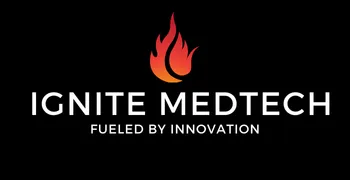Training and Webinars
We'll show you how it's done
Cohort based courses to free webinars get the resources you need to tackle the marketing yourself
Blog
We are passionate about healthcare marketing and love sharing our insights, tips, and strategies. Sign up to get the latest edition in your inbox.

How to Price Your MedTech Product
How to Price Your MedTech Product (Without Falling into the 510k Trap)
Pricing in MedTech isn’t just a spreadsheet exercise. It’s a strategy one that shapes how investors, clinicians, and hospitals perceive your product before they ever use it.
The number you put on your product tells the market what to think about you: whether you’re an innovator or an imitator, a strategic player or a commodity. And yet, too many early-stage founders default to “competitive pricing” anchoring their price to the nearest 510(k) device and assuming that being 10–15% cheaper will accelerate adoption.
It won’t. It just signals that you’re another option, not the better choice.
If you’re developing a novel product or even one with incremental improvements your pricing must communicate confidence, credibility, and value. Here’s how to build a pricing model that does exactly that.
1. Start with the value, not the cost
Every founder knows their COGS, but few can articulate the value delta their product creates.
Cost-plus pricing adding a margin on top of your manufacturing and regulatory costs might make sense in consumer goods, but in MedTech, it almost always undercuts your potential.
Hospitals and surgeons don’t buy based on production costs. They buy based on impact.
Ask yourself:
Does your product reduce OR time, reoperations, or readmissions?
Does it improve patient outcomes in a way that can be tied to hospital metrics?
Does it save nursing or technician labor?
Does it increase throughput in high-revenue procedures?
If you can answer yes to any of these, you have justification for a value-based price.
Translate those benefits into tangible metrics. For instance:
“Our system saves 10 minutes per case, which translates to 50 additional cases per year for the average center — or $250,000 in new billable revenue.”
Once you show economic value, pricing becomes a reflection of ROI, not a number pulled from thin air.
2. Build credibility before you set your price
One of the biggest mistakes founders make is trying to command a premium price before they’ve earned market trust.
Pricing power doesn’t come from your prototype it comes from brand equity. That’s the sum of credibility, consistency, and reliability your company conveys.
Start by building signals that scream “established player,” even if you’re early stage:
Your visual identity should align with your category’s premium brands; clean, consistent, and confidence-inspiring.
Your storytelling should go beyond “we built a better widget” to why it matters for patients, physicians, and the system.
Your proof points should show traction: KOL validation, pilot results, testimonials, early adoption stats.
If you’re still pre-launch, credibility can also come from association advisory board members, clinical partners, or well-known investors. Borrow credibility until you’ve built your own.
Remember: a credible brand doesn’t need to explain its price the market just assumes it’s worth it.
3. Avoid “me-too” pricing
The easiest way to lose margin is to position your device as “similar, but cheaper.”
That strategy attracts the wrong buyers; those who chase the lowest bid, not the best outcomes.
Instead, redefine the playing field. If competitors are priced per unit, maybe you price per workflow, per patient, or as a bundled solution. Change the metric so the comparison no longer applies.
For example:
If your catheter has better durability, show how your price per use is lower over time.
If your disposable requires less training or downtime, price around total procedural efficiency.
If your platform generates data insights, layer in subscription or analytics value.
The goal is to anchor your price to unique value, not equivalence.
Even in a 510(k) market, you can escape commoditization by reframing what buyers measure.
4. Use your brand to protect your price
Once you’ve established a premium position, your brand becomes the shield that protects it.
A strong brand turns price into a signal. Higher pricing communicates confidence, quality, and reliability attributes that matter deeply in healthcare procurement. When clinicians see your logo, they should immediately associate it with credibility.
Here’s how to reinforce that perception:
Consistency: Your messaging, sales materials, and visuals must all speak the same language — reliability and expertise.
Reputation: Highlight physician partnerships, published studies, and user success stories.
Experience: Make every touchpoint feel elevated; from packaging to post-purchase training.
When people feel that your company is dependable and visionary, they stop comparing prices and start comparing experiences. And that’s when pricing becomes a reflection of brand strength, not market noise.
5. Test, measure, and adapt
Pricing is not static; it evolves as your market matures.
In the early stage, your pricing may be designed to reduce friction for pilot sites. Over time, as you collect data, grow trust, and expand distribution, your perceived value increases and your pricing should follow.
Build in systems to monitor:
Conversion rates by customer type
Procurement feedback on perceived value
Channel and rep margins
Customer lifetime value (especially if recurring revenue is involved)
If adoption is lagging, don’t automatically lower your price test new ways of communicating your value instead. Conversely, if demand is accelerating faster than expected, test premium packages, service tiers, or bundled options to maximize revenue.
Smart companies treat pricing as a living experiment, not a one-time decision.
Takeaway
In MedTech, pricing isn’t what you charge — it’s what you communicate.
It’s a reflection of how well your story, proof, and brand connect with the market’s perception of value.
If your pricing model starts with cost, you’ll always be negotiating.
If it starts with value and brand trust, you’ll always be leading.
Don’t race to the bottom with 510(k) pricing.
Rise above it with clarity, credibility, and confidence.
If you’re ready to structure your pricing strategy around brand equity and value-based storytelling, download the Ignite MedTech Pricing Model Worksheet- your first step toward building a brand that earns its premium.








